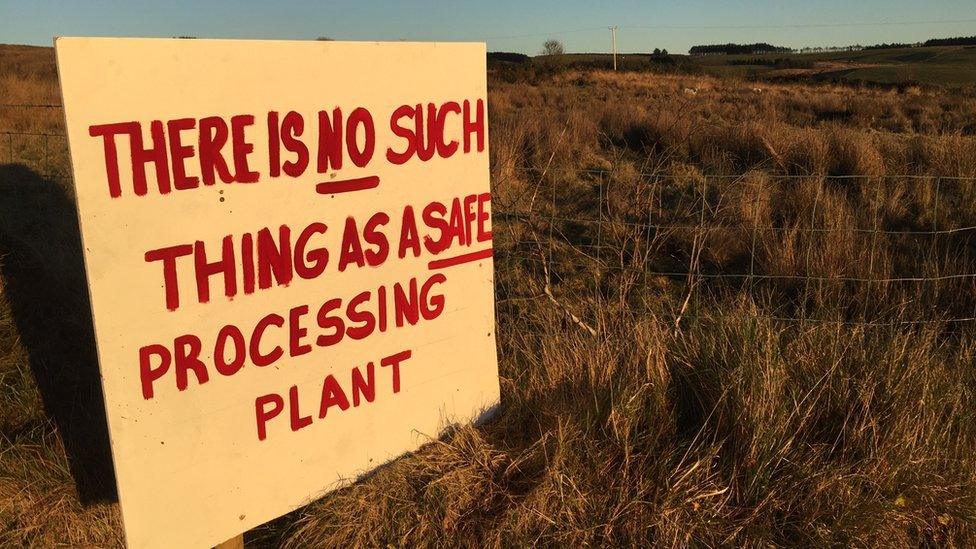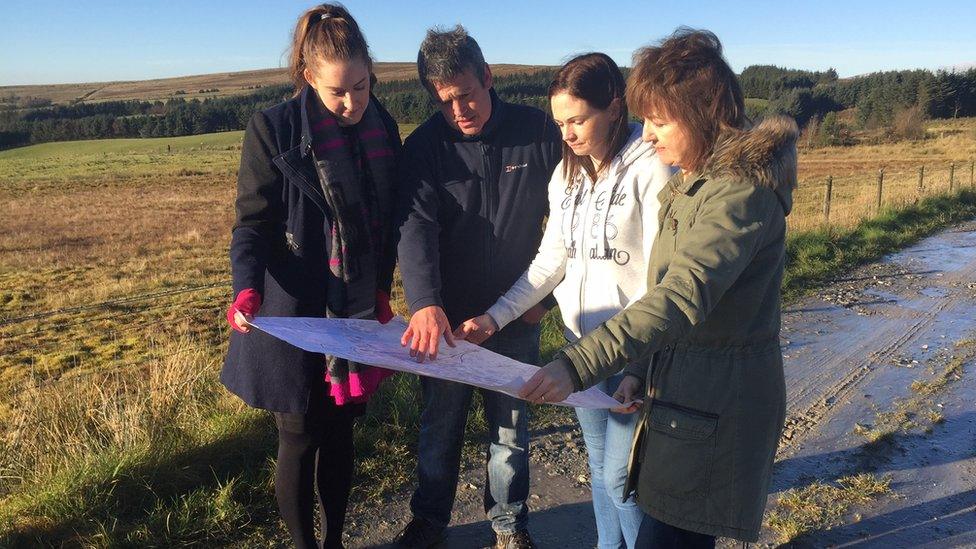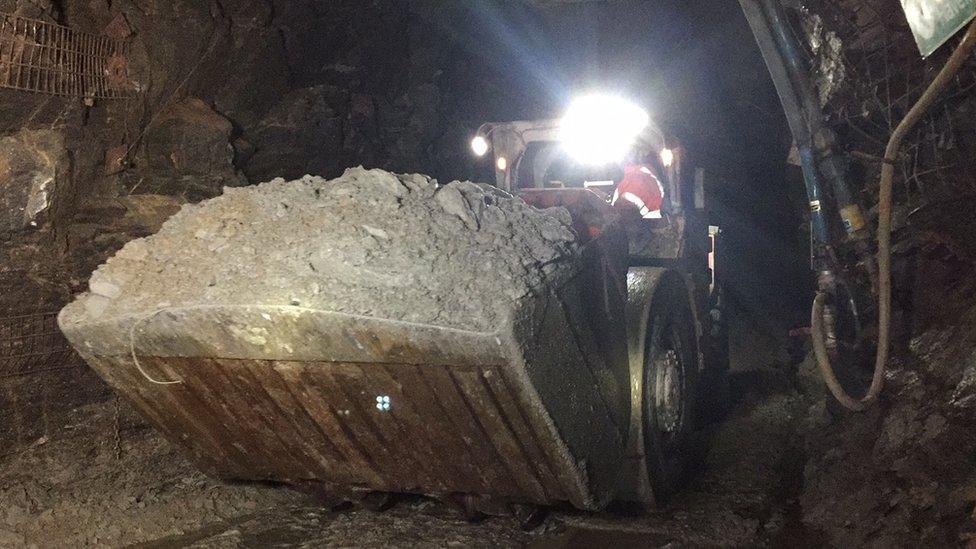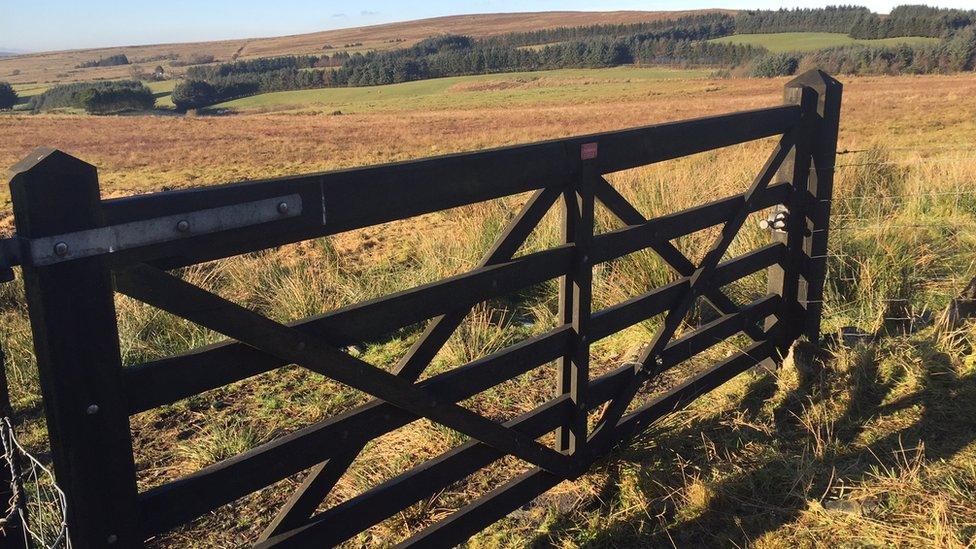Sperrins gold: Protestors fight controversial mine
- Published
- comments

People living near the proposed gold mine say they fear human error or equipment failure could lead to a cyanide spill
People living near a proposed gold mine near Greencastle in County Tyrone have said they fear human error or equipment failure could lead to a cyanide spill, a claim rejected by the mine company.
The chemical is used in part of the processing system.
The company planning the mine said it will be heavily regulated and does not pose a risk to the public or the environment.
Some people living near the proposed facility remain vehemently opposed.
Dalradian had said it can get millions of ounces of gold from the Sperrins over the 25-year life of the mine, creating hundreds of jobs in construction and operation.

The company planning the mine says it will be heavily regulated and does not pose a risk to the public or the environment
It is expected a planning application will be lodged early next year if a feasibility study proves the project is economically viable.
A diluted cyanide solution is used to separate tiny gold particles from a portion of the crushed ore.
The company will have between five and 20 tonnes of cyanide on site at any time with at least one delivery a week.

A number of groups have been set up to oppose the plan
It will be transported and stored in solid briquettes in which form it is inert.
A number of groups have been set up to oppose the plan.
The Save Our Sperrins group said it is worried about potential water and air pollution.
Sinead Warnock from Save Our Sperrins said the mine "would not fit" into an area which until recently was being considered as a national park.
"We didn't ask for this. We didn't ask for this danger to be put on our doorstep, there are no guarantees," she said.

Dalradian says the mine could potentially create hundreds of jobs in construction and operation
Dalradian said the use of cyanide will be heavily regulated.
The company said the 10% of crushed ore that is treated with it will go through a final process to destroy most of the cyanide.
It will then be pumped back underground in the form of a cement paste to backfill the blast holes.
It claims that paste will contain only "trace" amounts of the toxin and that there would be more naturally-occurring cyanide in "a handful of chewed almonds".

Protesters say the mine will be a huge eyesore due to the waste material produced
Patrick Anderson, chief executive of Dalradian, said he understood protesters' cyanide concerns.
"It's a very emotive word when it's used, but it's also one of the most heavily regulated substances on the planet in terms of its usage."
If approved, the mine would be sited in a designated Area of Outstanding Natural Beauty.
Over the full life of the mine hundreds of thousands of tonnes of waste material, with the texture of wet sand, would be contoured into the landscape.

It is expected a planning application will be lodged early next year if a feasibility study proves the project is economically viable
Once complete it will measure 875m long by 315m wide and will be built up to range of heights.
Protesters have said it will be a huge eyesore.
Dalradian said it will take 25 years for the full waste mound to be built and that it will be progressively planted with vegetation.
Mine water will go through a treatment works on site before being discharged to a stream which links to the Owenreagh River.
The Owenreagh flows into the Owenkillew River which is a Special Area of Conservation with EU protections because of the presence of salmon, otters and the freshwater pearl mussel.
- Published11 June 2015
